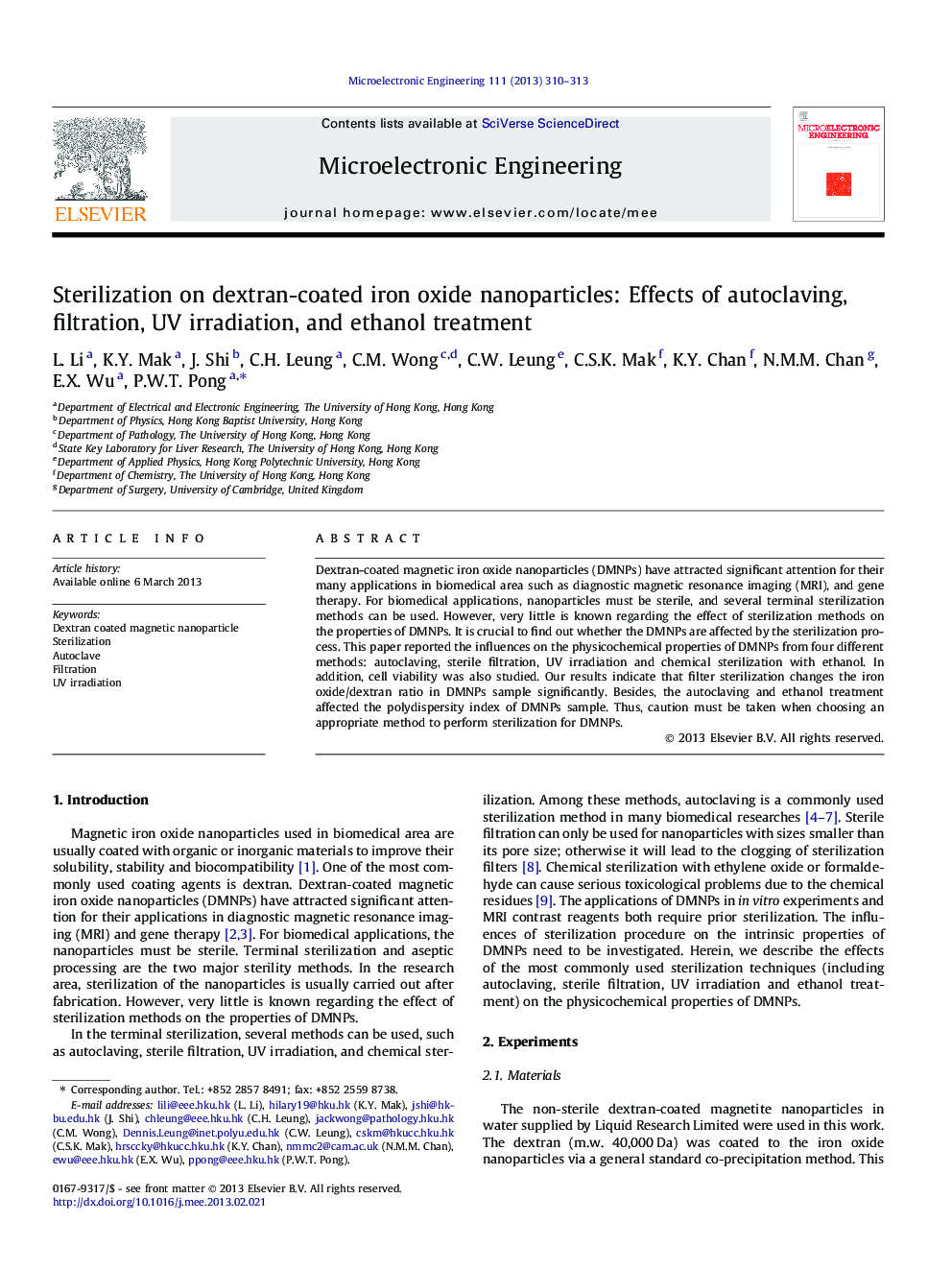| Article ID | Journal | Published Year | Pages | File Type |
|---|---|---|---|---|
| 540004 | Microelectronic Engineering | 2013 | 4 Pages |
Dextran-coated magnetic iron oxide nanoparticles (DMNPs) have attracted significant attention for their many applications in biomedical area such as diagnostic magnetic resonance imaging (MRI), and gene therapy. For biomedical applications, nanoparticles must be sterile, and several terminal sterilization methods can be used. However, very little is known regarding the effect of sterilization methods on the properties of DMNPs. It is crucial to find out whether the DMNPs are affected by the sterilization process. This paper reported the influences on the physicochemical properties of DMNPs from four different methods: autoclaving, sterile filtration, UV irradiation and chemical sterilization with ethanol. In addition, cell viability was also studied. Our results indicate that filter sterilization changes the iron oxide/dextran ratio in DMNPs sample significantly. Besides, the autoclaving and ethanol treatment affected the polydispersity index of DMNPs sample. Thus, caution must be taken when choosing an appropriate method to perform sterilization for DMNPs.
Graphical abstractGeneral description of the physicochemical consequences of the different sterilization methods on the dextran-coated magnetic nanoparticles.Figure optionsDownload full-size imageDownload as PowerPoint slideHighlights► Caution must be taken when sterilizing DMNPs. ► All four treatments did not alter the core size and magnetic behavior. ► All four treatments on DMNPs induced no additional toxic effects. ► Filtration decreased the mean hydrodynamic size and weight percentage of cores. ► Sample size distribution has alterations under autoclaving and ethanol treatment.
